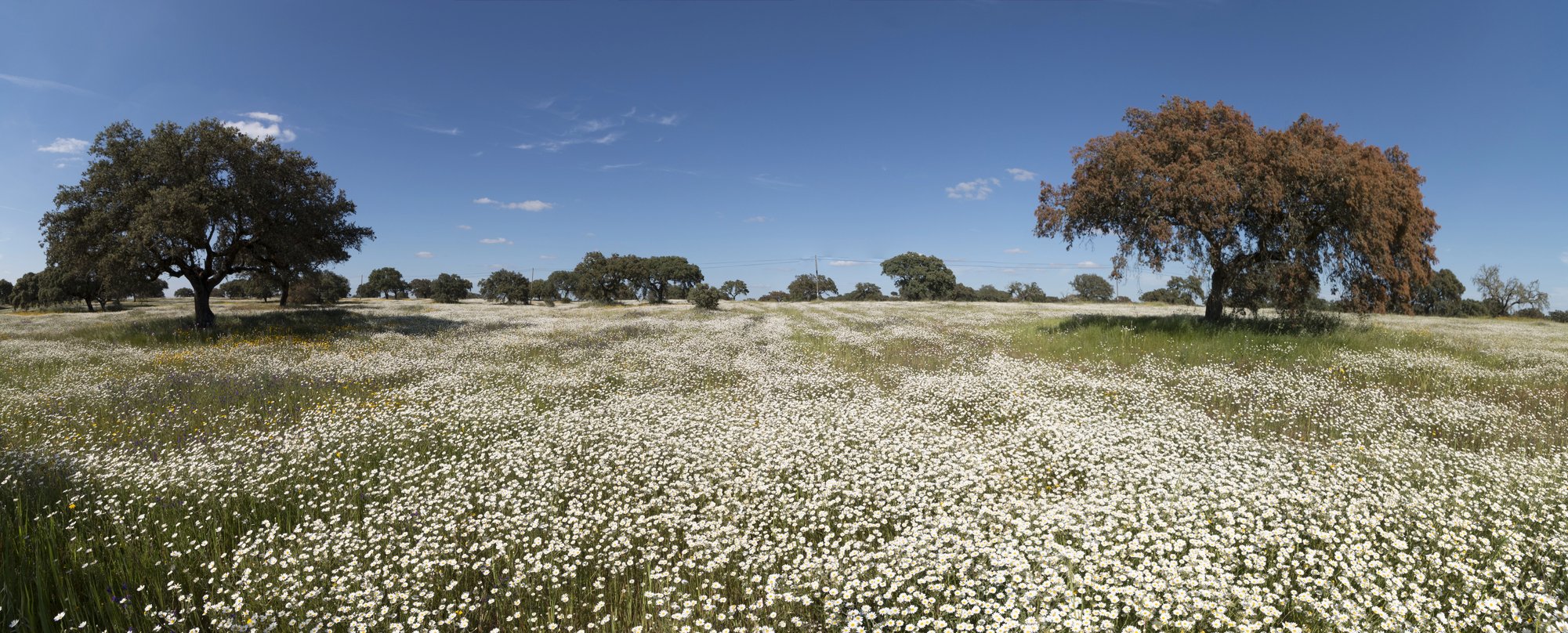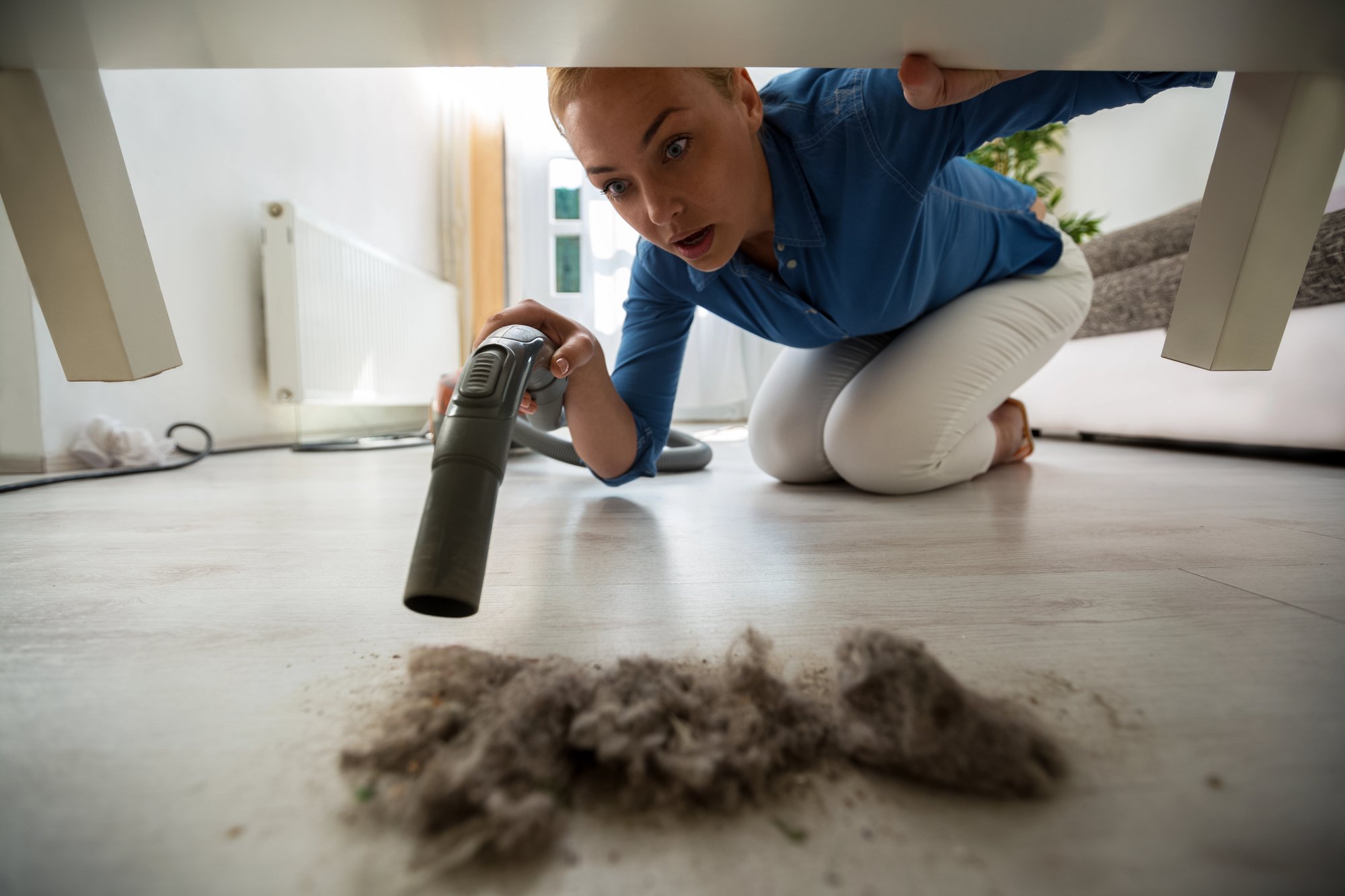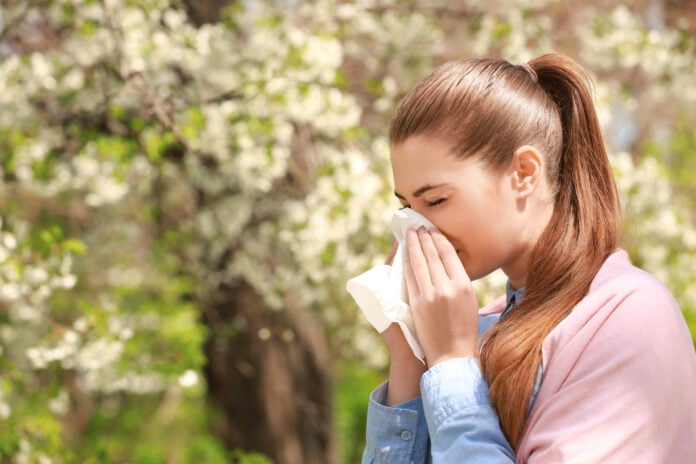Whenever you consider living in a country, it’s always important to check the local allergens. Portugal’s Mediterranean climate and diverse vegetation create a unique environment that impacts people living with allergies throughout the year. With its warm, dry summers and cool, wet winters, the country experiences distinct pollen seasons that affect millions of residents and visitors. Understanding when, where, and how allergies manifest in Portugal is crucial for anyone dealing with seasonal respiratory issues.
Recent comprehensive studies have revealed patterns of airborne pollen patterns distribution across Portugal. Conducted by the Portuguese Aerobiology Network, the research shows that allergic reactions in Portugal are primarily triggered by specific pollen types that vary dramatically by season and geographic location. Between 16 and 26% of Portugal’s population suffers from allergic rhinitis, which makes it one of the most common chronic conditions in the country.
What Kind of Pollen Can You Find in Portugal?
Portugal’s airborne pollen spectrum has distinct Mediterranean characteristics dominated by several key allergenic types. The country has recorded 14 different pollen types with significant allergenic importance. Of these, trees account for 64.2% of the total spectrum, herbs represent 28.5%, and weeds comprise 7.1%.
The most problematic pollen types for Portuguese allergy sufferers include:
Urticaceae (including Parietaria) – These plants produce pollen that is prevalent in coastal areas, particularly in the North and Lisbon area. They persist longer in the atmosphere than average pollen types.
Poaceae (Grasses) – The most widespread and significant allergen, which is found in all Portuguese regions. Grass pollen is particularly abundant in lawns and wastelands and represents the primary cause of seasonal allergies throughout the country.
Quercus species (Oak trees) – Predominantly found inland in the Centre and Alentejo regions, oak pollen contributes significantly to spring allergy symptoms.
Cupressaceae (Cypress family) – Responsible for winter allergies, these trees begin pollinating as early as January and continue through April in most regions.

Regional Variations
The intensity and timing of allergy seasons vary considerably across Portugal’s different regions. Mainland Portugal shows an average pollen index of 42,557, which is significantly higher than the islands’ average of 3,818. The Alentejo region experiences the highest total pollen levels, while Madeira records the lowest concentrations.
Northern Portugal experiences later pollen seasons. Grass pollination typically begins in April and extends through August or September. The region’s temperate climate influences the timing of different allergenic species.
Central Portugal and Lisbon Region see earlier pollen peaks, with pollen beginning to proliferate in March. The Termo-Mediterranean climate of this area creates conditions for extended pollen seasons.
Southern Portugal (Algarve) shows patterns similar to the central regions but with some unique characteristics, especially regarding Artemisia (mugwort) pollen, which extends from August through February.
The Portuguese Islands (Azores and Madeira) have distinctly different patterns, with lower overall pollen concentrations but unique timing patterns, particularly for grass pollen in the Azores occurring mainly during May and August.
Seasonal Allergy Calendar
Winter Season (December-February)
Contrary to popular belief, allergy season in Portugal begins during the winter months. January and February mark the start of Cupressaceae pollen release across all Portuguese regions, except the islands. Alnus (alder) pollen also appears during this period in mainland Portugal. This winter pollen exposure represents one of the few causes of respiratory allergies during the colder months and has been increasing in prevalence throughout the Mediterranean region.
Spring Season (March-May)
Spring represents the most challenging period for Portuguese allergy sufferers, with the greatest diversity of pollen types appearing between March and June. March sees the continuation of Cupressaceae pollen and is joined by increasing levels of Pinus (pine) and Rumex (dock) species.
By March, several important allergenic trees begin their pollination cycles. Platanus (plane trees) start their two-month pollination period, while Quercus (oak) species begin releasing pollen that will persist through May. Parietaria, a particularly troublesome allergen for many Portuguese residents, also becomes prevalent during this period.
April marks a critical intensification point, with Betula pendula (birch) beginning its main two-month pollination period. Plantago (plantain) and the highly allergenic Olea (olive) trees also start their seasons, with olive pollen persisting in the atmosphere until June and sometimes extending to September.
The complexity increases in April and May with the appearance of Amaranthaceae species, whose pollen season extends remarkably from April until the end of autumn. This represents one of the longest pollen seasons among weeds and herbs.
Summer Season (June-August)
Summer brings its own set of challenges, although there is a general reduction in overall pollen diversity. Castanea (chestnut) pollen becomes prevalent during June and August, while Eucalyptus has an extended pollination period throughout the year, especially intense in Lisbon, Algarve, and the islands.
Poaceae (grass) pollen continues to dominate during summer months, with peak concentrations varying by region. In northern, central, and eastern areas, grass pollination typically peaks in early summer, while Mediterranean coastal areas may experience grass pollen seasons extending longer due to the sequential blooming of different grass species.
August marks the beginning of Artemisia (mugwort) pollination, which continues until October or November, particularly in the Lisbon and Alentejo regions.
Autumn Season (September-November)
Autumn generally provides relief for most allergy sufferers, with pollen concentrations remaining at lower levels. However, Artemisia continues its season through November in some regions, and certain late-blooming species may still contribute to allergenic load.
How Allergies Develop
Allergic reactions to pollen result from the immune system’s exaggerated response to harmless microscopic particles present in the air. The immunological changes are triggered by specific proteins known as allergens contained within pollen grains. These allergens are released when pollen grains come into contact with nasal, eye, bronchial, or skin mucosae.
Most pollen cells measure between 8 and 10 micrometers, a size small enough to enter the bronchial tree and trigger respiratory responses. Wind carries pollen over considerable distances, sometimes transporting allergenic particles many miles from their source.
Common Symptoms
Allergic rhinitis, the most common manifestation of pollen allergies, affects the internal lining of the nose through chronic inflammation. Primary symptoms include:
- Coughing or swallowing discomfort
- Persistent sneezing
- Nasal congestion
- Itchy, runny nose
- Excess nasal secretions causing throat irritation
Rhinitis is frequently associated with other respiratory conditions, including allergic sinusitis, conjunctivitis, and asthma. Approximately 40% of rhinitis patients also develop asthma.
House Dust Mites
While pollen dominates seasonal allergies, house dust mites represent a year-round concern for Portuguese allergy sufferers. These microscopic arthropods thrive in Portugal’s climate, especially during autumn and winter in regions like the Algarve, where higher humidity levels increase their populations.
House mites belong to the Arachnidae family and live primarily in domestic dust, finding human homes ideal due to stable temperatures, relatively high humidity, and abundant food sources in the form of keratin from dead skin cells. They concentrate in areas with frequent human skin contact: drapes. cushions, mattresses, blankets, books, sofas, stuffed toys, and carpets.
Mite-related allergic symptoms correlate directly with the population present in homes. Complete elimination is impossible, but effective management strategies can significantly reduce exposure and symptoms.
How Can We Protect Ourselves from Pollen?
In order to protect ourselves from pollen, it is important to keep windows and doors closed during peak pollen periods (typically midday to early afternoon), use air conditioning systems equipped with pollen filters, open windows only during early morning hours or at night when pollen concentrations are lowest, and regularly clean and replace HVAC filters.
To protect yourself while outdoors, wear sunglasses to protect your eyes from pollen exposure, use integral helmets when riding motorcycles, keep car and train windows closed during travel, and avoid intense outdoor physical activities on hot, windy days during high pollen periods.
At home, you can do the following:
- Change clothes immediately upon returning home
- Shower and wash hair before bedtime to remove accumulated pollen
- Avoid hanging laundry outdoors during high pollen periods
- Regularly groom pets, as they can carry pollen indoors on their fur
Dust Mite Control
To protect ourselves from dust mites, use anti-mite mattresses with waterproof, washable covers. Choose linen or cotton bedding over flannel or wool, which accumulate more mites. Use HEPA filter vacuum cleaners for regular cleaning of mattresses, cushions, and floors. Wash bedding in hot water (over 55°C) to eliminate mites. Finally, you can place non-washable stuffed animals in freezer bags for 24 hours to kill mites.
Keeping dust mites at bay is a constant battle. Make sure to not go too heavy on the thick carpets, rugs, and heavy curtains. Regularly dust electronics, books, ornaments, and decorative items. Reduce the level of humidity in the house if possible. Clean areas where dust accumulates regularly and thoroughly.

Diagnosis and Treatment Options
Proper allergy diagnosis requires professional medical evaluation, typically involving a skin allergy tests with direct exposure to potential allergens which help identify specific triggers. You can also get a laboratory tests that involve blood tests measuring specific antibody responses to various allergens. Respiratory function studies are another option which are particularly important for patients showing signs of asthma development.
Pre-seasonal consultation with family doctors or specialized allergist/immunologists is recommended for comprehensive evaluation and treatment planning. Preventative medications are also available including antihistamines for general allergic response management, anti-asthmatic medications for respiratory symptom control, corticosteroids for inflammation reduction, and targeted local treatments for specific organs (nasal sprays, eye drops, topical skin treatments)
Immunotherapy (desensitization) vaccines are also available and provide fundamental long-term prevention strategies, which are typically administered over 3-5 years. These treatments gradually expose patients to increasing amounts of specific allergens, which help the immune system develop tolerance.

Living Successfully with Allergies in Portugal
Understanding Portugal’s unique allergy landscape will help you effectively manage your seasonal symptoms. Once you understand Portugal’s allergy season, it will be much easier to be prepared. Remember that peak allergy season generally occurs from March to July, with regional variations in timing and intensity.
Regular consultation with your doctor in Portugal and being proactive with medications can significantly improve your quality of life if you are an allergy sufferer.
The Portuguese Aerobiology Network provides valuable resources, including weekly pollen bulletins available online, which can help you stay informed and minimize your suffering during allergy season and focus on enjoying Portugal’s beautiful climate and outdoor lifestyle instead!


